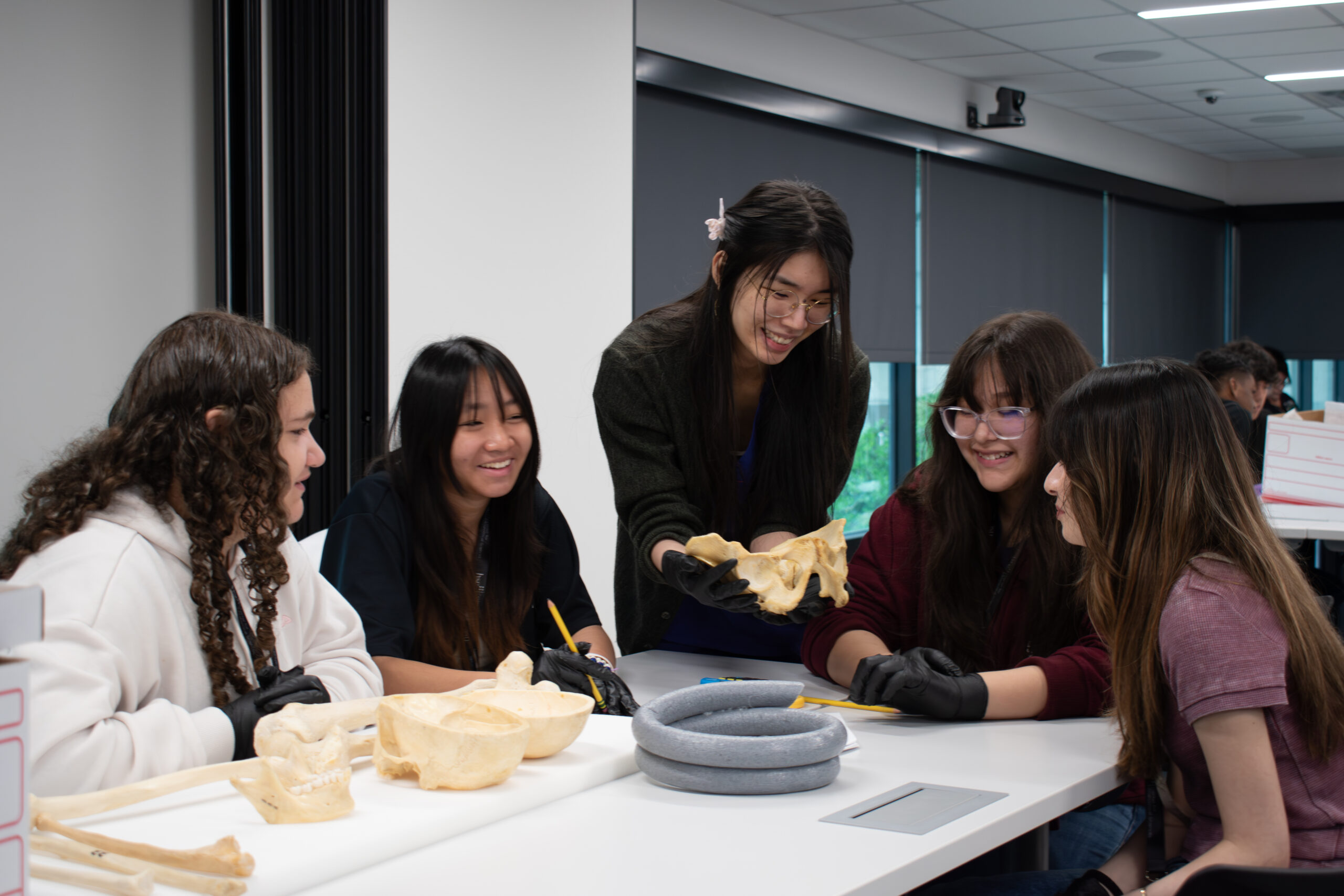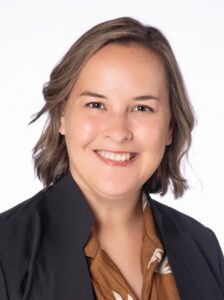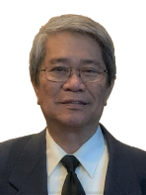Structural Anatomy and Rehabilitation Sciences

Rachel Menegaz, PhD, Graduate Advisor
Research and Education Building RES-230 | Phone: 817-735-0126 | E-mail: Rachel.Menegaz@unthsc.edu
- 2021-22 Discipline Handbook for Structural Anatomy and Rehabilitation Sciences
- 2022-23 Discipline Handbook for Structural Anatomy and Rehabilitation Sciences
- 2023-24 Discipline Handbook for Structural Anatomy and Rehabilitation Sciences
Graduate Faculty: Cho; Cook; Crowe; Finco; Gonzales; Lesciotto; Lovely; Maddux; Menegaz; Patterson; Perchalski; Reeves; Rosales; Tovar-Vidales.
Structural Anatomy and Rehabilitation Sciences (STARS) focuses on the integration of anatomical form with biomechanical function using advanced experimental, computational, and clinical tools. Major research foci in the STARS discipline include: (1) functional morphology or the study of form-function relationships, evolutionary/adaptive significance, and mechanical behaviors of musculoskeletal tissues; (2) biomechanics, movement science, and neuromuscular integration; (3) clinical anatomical studies linked to applications in orthopedics and physical therapy; (4) the analysis, design, and/or development of rehabilitation protocols, assessment tools and techniques, assistive devices, and instrumentation used in rehabilitation practice; and (5) studies of educational pedagogy in anatomy/movement science through the development of unique educational tools, techniques, and assessment strategies. STARS offers research opportunities, coursework, and teaching experiences that will develop and train students who will be qualified to serve as faculty members, researchers, and clinicians in various departments at health science centers, universities, and other research organizations.
All students entering the discipline will complete an integrated biomedical science core curriculum that includes fundamental principles of biochemistry, cellular and molecular biology, microbiology and immunology, pharmacology, physiology, and neurobiology. Beginning with the second semester, students will enroll in additional advanced courses for the discipline such as Applied Biomechanics, Structural Anatomy of the Musculoskeletal System, Structural Neuroscience, and other advanced elective courses, to be completed during their graduate career. Students are required to participate in seminars, work in progress (WIP) presentations, and journal club for the duration of their graduate career. Students will conduct original, publishable research and will be expected to present their results at the annual HSC Research Appreciation Day (RAD) and at national scientific conferences.
The completion of the M.S. degree typically requires two to three years; the Ph.D. degree is generally completed in four to five years. Graduates with advanced degrees typically find employment in higher education, industry and government agencies.
Stipend and benefits for PhD students

Research Strengths
The discipline focuses on the integration of anatomical form with biomechanical function using advanced experimental, computational, and clinical tools. Major research emphases within the program include, but are not limited to:
Functional Morphology: Studies investigating the structure and function of human and animal anatomy from evolutionary and/or anthropological perspectives.
Biomechanics: Studies investigating musculoskeletal mechanics, movement, physiology, and performance using clinical tools and mathematical modeling
Clinical Anatomy: Studies investigating the structure and variation of human anatomical tissues from a biomedical perspective.
Rehabilitation Science: Studies investigating the analysis, design, and development of orthopedic and rehabilitation protocols, techniques, tools, and assistive devices.
Education Science: Studies investigating the teaching and learning of anatomy/movement science including the development of novel educational tools, techniques, and assessment strategies.
STARS Faculty
 |
Rachel Menegaz, PhD. STARS Graduate Advisor Associate Professor, Center for Anatomical Sciences – Musculoskeletal biology, craniofacial biomechanics and feeding, developmental plasticity, osteogenesis imperfecta. |
. |
. |
 |
Elizabeth Cho, Ph.D. Assistant Professor, Center for Anatomical Sciences – Biological anthropology, human evolution, climactic adaptation, sexual dimorphism. |
. |
. |
 |
Rebecca Cook, Ph.D. Assistant Professor, Center for Anatomical Sciences – Biological anthropology, pelvic morphology, gait biomechanics, orthopaedic interventions and endoprostheses. |
|
|
|
 |
Nicole Crowe, MS. Instructor, Center for Anatomical Sciences – Histology, bone microstructure. |
|
|
|
 |
Graci Finco, PhD, CPO. Assistant Professor, Department of Physical Therapy – Orthotics and prosthetics, limb loss and limb differences, gait biomechanics, wearable sensors. |
. |
. |
 |
Lauren Gonzales, PhD. Assistant Professor, Center for Anatomical Sciences – Biological anthropology, primate evolution, brain and sensory anatomy, field paleontology. |
. |
. |
 |
Kate Lesciotto, PhD, JD. Assistant Professor, Center for Anatomical Sciences – Forensic anthropology, craniofacial anatomy, education science. |
. |
. |
 |
Rehana Lovely, PhD. Assistant Professor, Center for Anatomical Sciences – Human anatomical variation, education science and community outreach research. |
. |
. |
 |
Scott Maddux, PhD. Associate Professor, Center for Anatomical Sciences – Biological anthropology, human evolution and variation, respiratory biomechanics, climatic adaptation and thermoregulation. |
. |
. |
 |
Bern Perchalski, PhD. Assistant Professor, Center for Anatomical Sciences – Biological anthropology, primate evolution, locomotor biomechanics. |
. |
. |
 |
Rita Patterson, PhD. Professor, Associate Dean for Research, Dept. of Family Medicine and Osteopathic Manipulative Medicine – Biomedical engineering, hand and wrist biomechanics, kinematics, motion capture. |
. |
. |
 |
Rustin Reeves, PhD. Professor & Director, Center for Anatomical Sciences – Musculoskeletal biomechanics, education science and outreach research. |
. |
. |
 |
Armando Rosales, MD. Associate Professor, Center for Anatomical Sciences – Human anatomical variation, clinical/surgical anatomy. |
. |
. |
 |
Tara Tovar-Vidales, Ph.D. Instructor, Center for Anatomical Sciences – Glaucoma, pathology. |
Research Facilities
Human Movement Performance Laboratory: The 2,300 square foot HMP laboratory is equipped with a motion analysis system for kinematic testing of normal and pathological motion, force plates for measurement of center of pressure, and computational facilities for creating patient-specific models and simulations.
Bioskills Laboratory: The Bioskills Lab supports a wide spectrum of cadaver-based research including investigations of human variation, biomechanics, neuroscience, applied anatomy (development of clinical protocols and devices), and anatomy-focused educational pedagogy.
Bone and Joint Research Laboratory: Equipped with cutting-edge technologies, including instruments for assessing biomechanical material properties (MTS 858 mini Bionix II) and motion tracking (Polhemus LIBERTY 6D), the Bone and Joint Research Laboratory supports investigations of hard and soft tissue biomechanics.
Comparative Anatomy and Morphometrics Laboratory: The CAM Lab supports investigations of anatomy in both humans and non-human species. The lab facilitates 3D quantitative analyses of anatomy using modalities such as 3D laser scanning, computed tomography (CT), and magnetic resonance imaging (MRI).
Evolutionary Anatomy and Education Research Laboratory: The “EvolvEd” Lab facilitates the storage and study of fossil/skeletal material from paleontological excavations and experimental studies. The lab houses high-precision 3D laser scanners (Artec Space-Spider and Artec Micro) and equipment for high-resolution photography and casting. The lab also actively supports education science research and K-12/community outreach.
Human Thermoregulation Laboratory: The Human Thermoregulation Lab is equipped with a 150 ft2 Cantrol walk-in environmental chamber to support experimental investigations into the interaction between human anatomy and thermoregulatory physiology during exposure to different climatic conditions.
Musculoskeletal Biology Laboratory: The MBL is equipped for dissection- and histological-based analyses of hard and soft tissues. The lab houses a histological bench for paraffin-based histology and immunohistochemistry, a Meiji MT5000 biological microscope with 4-60x objectives, a Meiji EZM stereo microscope, a NightSea adapter system for whole-mount fluorescent imaging, and a PathScan Enabler 5 slide scanner.
3D Printing Laboratory: The 3D Printing Lab houses advanced printing technologies for educational, outreach, and research purposes. These include a 3D printer (Ultimaker 3e) for the production of hyper-accurate 3D anatomical models and a large-format printer (HP Designjet Z5200) for cost-efficient printing of high-resolution faculty/student research posters.
Other affiliated facilities on campus:
ITR Imaging Center: A part of the new 20,000 square foot Clinical Core in the Institute for Translational Research (ITR), the Imaging Center houses two Siemens Biograph Vision 450 PET/CT scanners and two Siemens MAGNETOM Vida MRI scanners for use by UNTHSC researchers.
UNTHSC Discovery Centers: A part of the UNTHSC “Open Innovation Initiative”, the two Discovery Centers on campus provide shared laboratory space for students and faculty to access state-of-the-art equipment not available in most research labs.
UNTHSC Microscopy Core: Equipped with high-powered confocal (laser scanning) microscopes and accompanying image analysis workstations, the Microscopy Core is available for use by all UNTHSC researchers (training is also provided).
UNTHSC Preclinical Imaging Core: This core facility is equipped with the necessary equipment for in-vivo, high resolution imaging of small animals. This core features a 7T MRI system, a CT 80 system with a PET Clip-On ring from MR Solutions, and PowerScan and VivoQuant work stations for image analysis. The CT 80 is capable of stand-alone CT operations and can be used with the PET ring for sequential multimodality imaging.
Degree Plans
Both Ph.D. and M.S. degree programs may be entered by applicants holding a Bachelor’s degree. A M.S. degree is not a prerequisite for completing the Ph.D. program. Completion of the M.S. degree typically requires 2 years; the Ph.D. degree is generally completed in 5 years.
Detailed information regarding each degree can be found in the STARS Handbook (see above).
Application Procedures
All applicants to the Structural Anatomy and Rehabilitation Sciences (STARS) graduate discipline must apply through the UNTHSC College of Biomedical and Translational Sciences. Specific application guidelines are available for each degree: M.S. application guide; Ph.D. application guide (note the M.S. in Biomedical Sciences (STARS) degree is a “traditional” research-based M.S. degree at UNTHSC).
Individuals interested the STARS discipline are strongly encouraged to inform the Graduate Advisor, Dr. Rachel Menegaz (Rachel.Menegaz@unthsc.edu), or a prospective STARS faculty mentor (see list above) of their intent prior to submitting an application.
Conference Travel Awards
Anatomy Travel Award Program (Center for Anatomical Sciences): $500-650 per student, preference for presenters. Rolling deadline. Application available here.
SABS Travel Awards (Student Association of Biomedical Sciences): $600 per student for conference presenters; $400 for workshop attendees. Deadlines: by cycle, see application for details. Application available on the HSC Engage website on the SABS page.
Contact
Rachel Menegaz, Ph.D.
STARS Graduate Advisor
Center for Anatomical Sciences
Phone: 817-735-0126
E-mail: rachel.menegaz@unthsc.edu


Social media